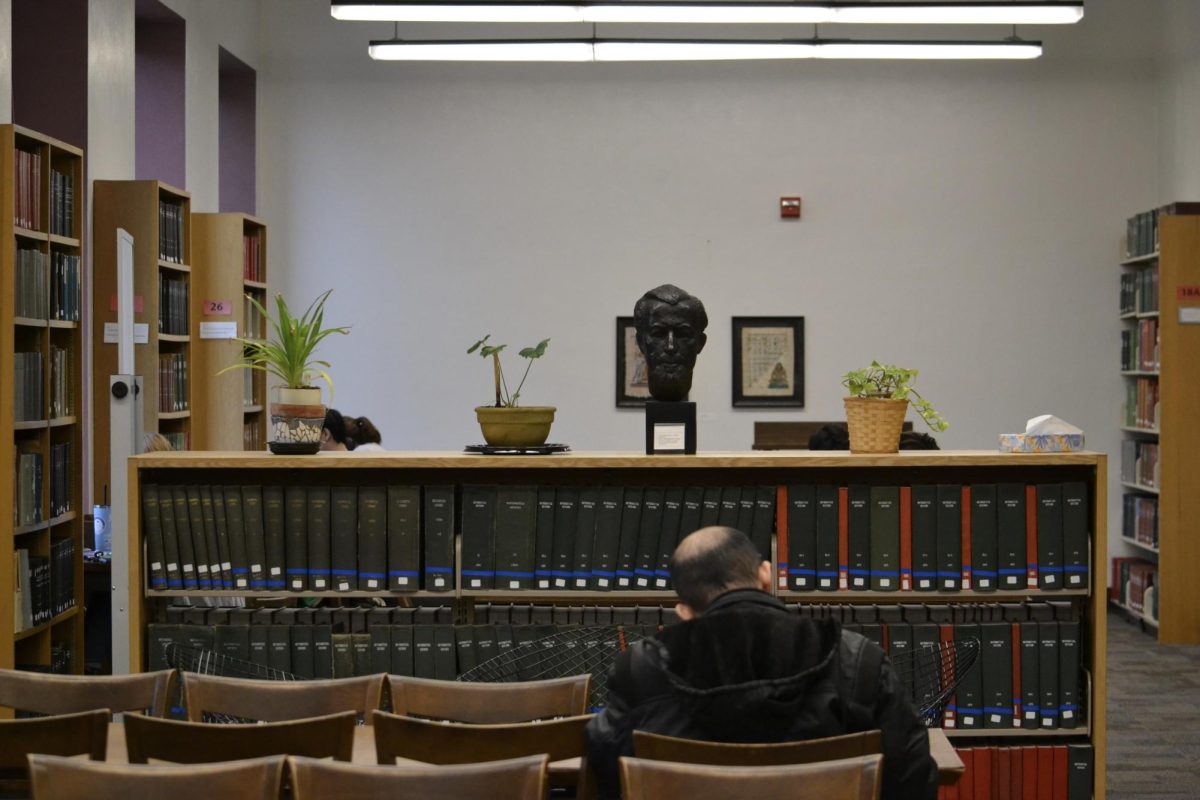In a large, dark, garage-like room, flames rage in a huge, round furnace while artists clad like firefighters in leather pour molten iron — so hot it glows and oozes like lava — into the dozens of art molds spaced across the furnace floor.
“The notion of bringing people together to make art is the important thing,” said Wayne Potratz, professor and art department chairman, who started the program in 1970. “We have probably the finest college art foundry in the country in terms of a facility and a program.”
The 27th Annual Iron Pour at the foundry in the University’s Art Building on Friday brought students from five Minnesota colleges together with artists from around the country to make cast iron sculptures.
Making the cast iron sculptures is not a simple process, but as artist and University sculpture professor Kurt Dyrhaug said, that difficulty is a part of the process’ beauty.
“What’s important to me is the community of it all,” Dyrhaug said. “At this particular event you have 40 people with similar interest and excitement. It really provides a wonderful opportunity to learn.”
The excitement comes every time the horn blows, telling the ladle team and the charge team to rush into action. First, nearly 300 pounds of molten iron is tapped from the furnace and transferred to a ladle resting on a crane. The furnace, known as a cupola furnace, burns in excess of 3,000 degrees Fahrenheit.
The molten iron is then skimmed to keep imperfections out of the molds. Ladle team member Charles Williamson, a master’s of fine arts candidate, said, “It’s hot. You’re carrying a pot of metal that’s 2,000 plus degrees and you have to hop, dance and skip around the molds.
“You can’t touch a mold because you might break it — the mold might already be full and if it bursts then you have an accident there and then you might drop the pot, so you’re constantly aware of what’s going on around you. You’re on edge 110 percent.”
Williamson said it is hard work but well worth it because, “It’s just the biggest rush in the world, it’s a control trip. You heat (the iron), melt it and pour it into a mold that has your fingerprint on it. It’s 100 percent your whim, your will.”
While the ladle team is pouring, the charge team begins its job. With the furnace lid open and flames bursting out, the team pours coke — a form of coal — into the top, raking it into an even layer. The iron is poured over the coke, and the melting process begins again.
Casting iron to make art rather than functional items, such as manhole covers and fireplace elements, is an important part of the excitement, Dyrhaug said. “When you say I’m going to cast a sculpture out of iron, it’s primitive, ancient and has a history. People have been using iron for 5,000 years, but now it’s art.
“Because this art form is only 35 or 40 years old there’s not a lot of baggage onto it yet. There aren’t any rules yet, we’re still figuring it out, and because of that it’s very exciting.”
A male torso and decorative bowls were among the molds artists made for the 27th Annual Iron Pour, which melted more than 3,000 pounds of scrap iron, mostly from radiators.
This year the University of Minnesota, the College of Visual Arts at St. Paul, St. Olaf College, the Minneapolis College of Art and Design, the Southwest State University at Marshall Minnesota and individual artists participated.










